September 2023
Trondheim
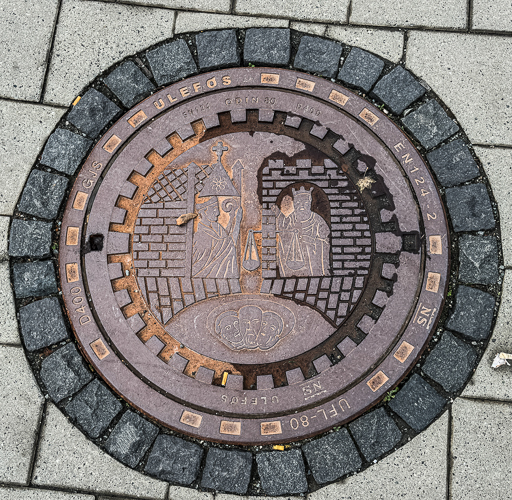 Like other cities in Norway, Trondheim has its own manhole covers. Their’s contain the Trondheim city coat of arms. The coat of arms represents the two important kings in Trondheim, Olav Tryggvason, who founded the city, and Olav the Holy, who, after his death, was declared a saint.
Like other cities in Norway, Trondheim has its own manhole covers. Their’s contain the Trondheim city coat of arms. The coat of arms represents the two important kings in Trondheim, Olav Tryggvason, who founded the city, and Olav the Holy, who, after his death, was declared a saint.
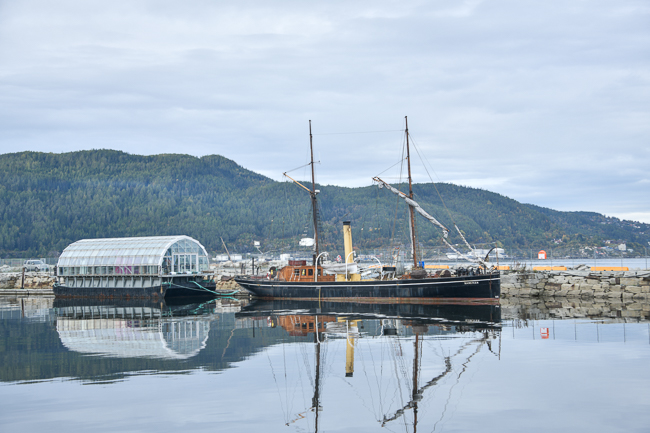
Trondheim is the third most populous municipality in Norway and the fourth largest urban area. The tech capital of Norway, it is home to the Norwegian University of Science and Technology (NTNU), the Foundation for Scientific and Industrial Research (SINTEF), the Geological Survey of Norway (NGU), and St. Olavs University Hospital.
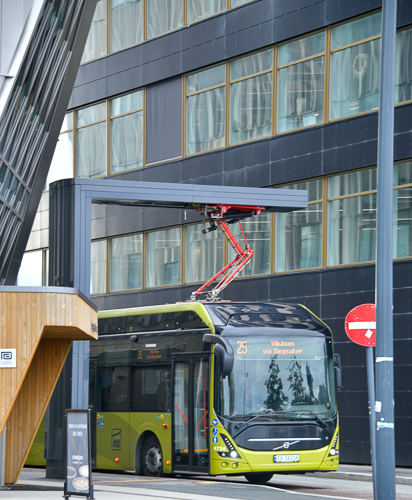
We were fortunate to see this bus charging station in use
This is Norway’s first wireless Electric Road System. The buses take about 18 minutes to charge and then run all day.
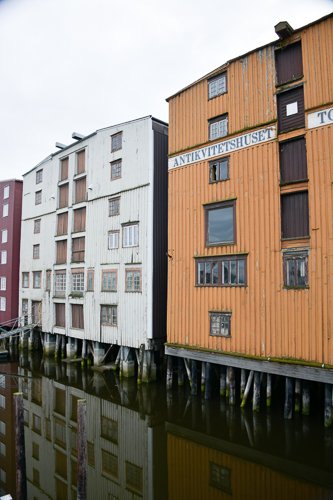
The Nidelva flows through Trondheim, with old storehouses flanking both sides of the river.
Like other cities in Norway, Trondheim was repeatedly ravaged by fires. The 1651 fire destroyed 90% of all buildings within the city limits.
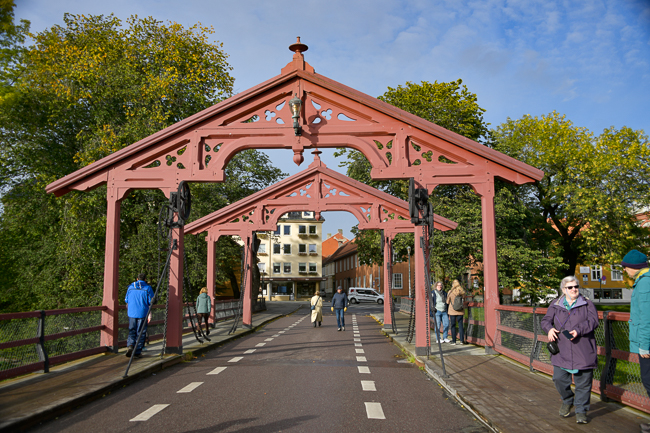
The Old Town Bridge of Trondheim – Gamle Bybro
The Bridge was built by Johan Caspar von Cicignon in 1681 in conjunction with the reconstruction of the town after the great fire of 1651.
Originally, Gamle Bybro was constructed of wood, but three stone piers supported the wood. In the middle of the bridge, an iron gate was placed. This remained a guarded city gate until 1816. At each end of the bridge, there was a toll and guardhouse.
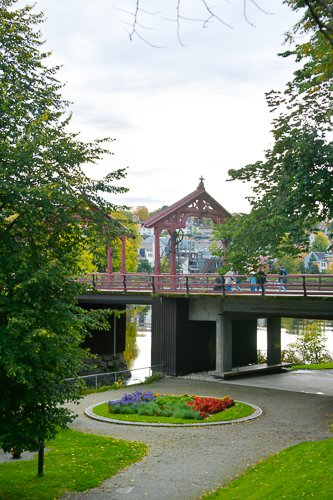
At one end of the bridge is this contraption.
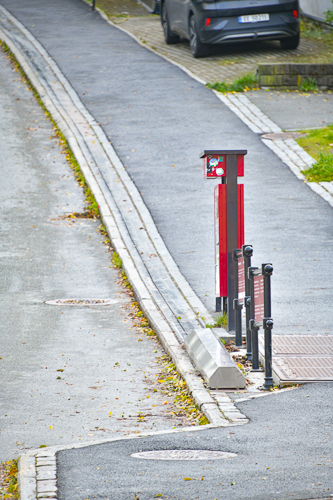
The Trampe bicycle lift
The bicycle lift was invented and installed in 1993 by Jarle Wanwik. While the use of the lift is free, your ability to use it properly will most likely cost you your pride. When using the lift, the right foot is placed on the starting point (the left foot stays on the bicycle pedal). After pushing the start button, the user is pushed forward, and a footplate emerges. A common mistake among first-time users is that they don’t keep their right leg outstretched and their body tilted forward. This makes it hard to maintain balance on the footplate and can result in falling off.
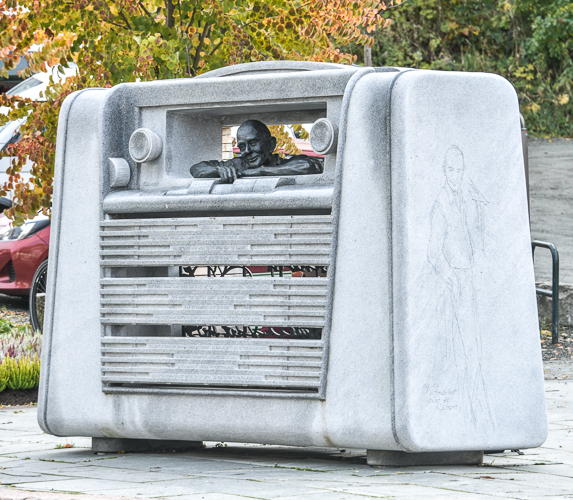
At the bicycle lift is this charming sculpture. It is titled Minnesmerke and is by Otto Nielsen.
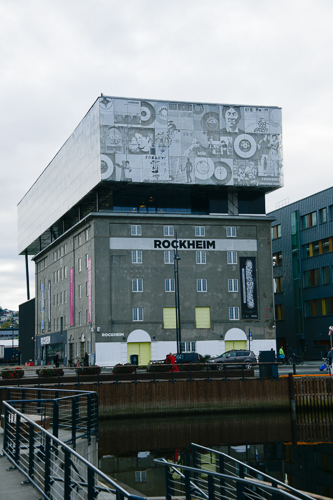
Norway’s Rock and Roll Museum featuring Norwegian artists.
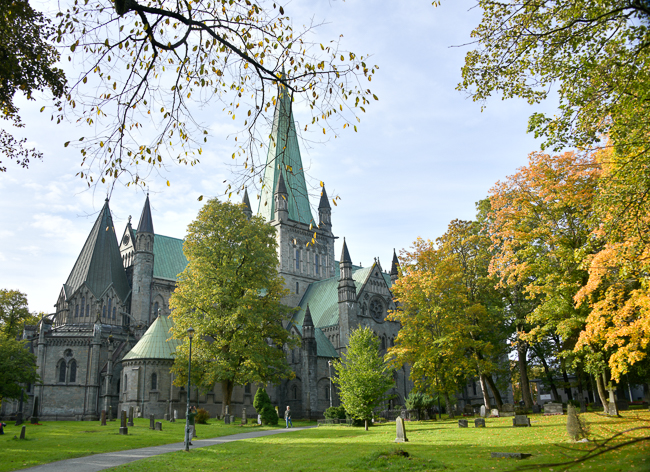
Nidaros Cathedral
Nidaros Cathedral was built over the burial site of King Olav II (c. 995–1030, reigned 1015–1028), who became the nation’s patron saint. It is also the traditional location for the consecration of new Norwegian kings.
It was built over a 230-year period, from 1070 to 1300, when it was substantially completed. However, additional work, additions, and renovations have continued intermittently since then, including a major reconstruction starting in 1869 and completed in 2001.
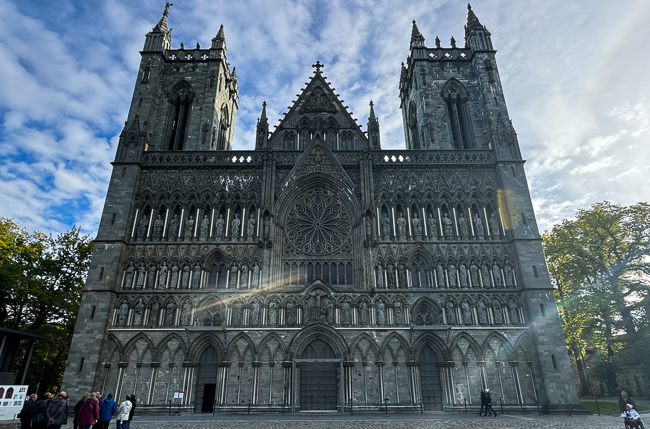
The West Front of the cathedral
The West Front was the final portion to be completed. The restoration of the West Front took from 1905 to 1983 and was worked on by many sculptors. In 1869, the Nidaros Cathedral Restoration Workshop was founded to restore the Cathedral.
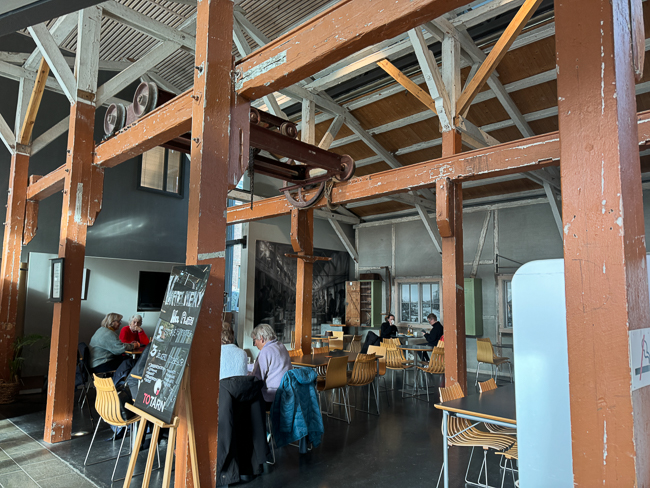
The workshop has been closed, but they have kept a vestige of it in the gift shop. I appreciate their honoring the crafts people long after their work has been completed.
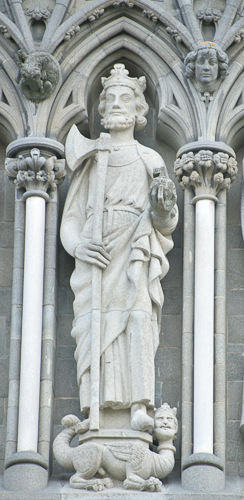
Above is the statue of St. Olaf, a king of Norway who died at the Battle of Stiklestad in 1030 while strongly promoting Christianity in Norway. He is a leading Nordic saint. His statue is shown with a war axe in one hand and an orb in the other. Olaf’s sculpture stands on a dragon-shaped creature with a human head, representing Paganism.
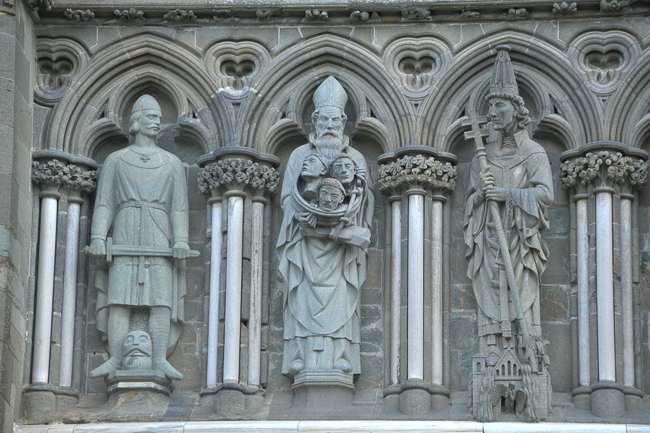
On the left is Olaf Tryggvason, who died in the battle of Svolder in 1000. He is considered the second Christian king of Norway. Between the statue’s feet, one can see the head of Tormod Kark, a slave who slew his pagan master, Haakon Jarl.
In the center is Bishop Sigurd, who came with Olav Tryggvason from England to Christianize the country and is the first to canonize a Norwegian Saint, Saint Sunniva. He went on to Sweden, where his three nephews were decapitated and their heads arranged in a bowl and thrown into the river. The heads in the bowl have the appearance of the architects instrumental in the reconstruction of the cathedral.
On the right is Saint Clement, one of the first Bishops of Rome.
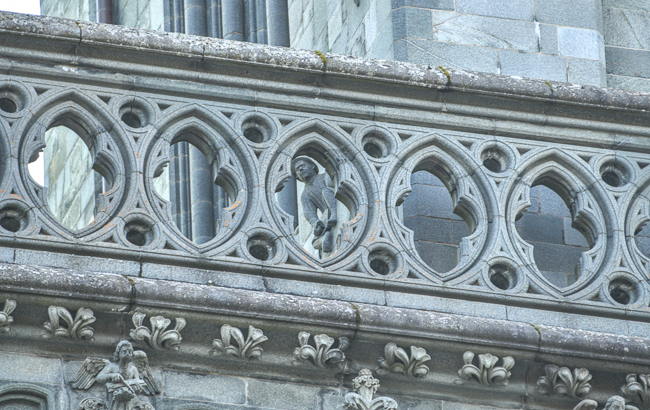
The Stone Mason
If you look carefully through the balustrade, you will see a small sculpture of a stone mason. According to a prophecy, the cathedral will fall upon its completion. The mason holds the last brick in his hand, forever preventing the cathedral from being completed and thus, as the legend goes, keeping the cathedral standing.
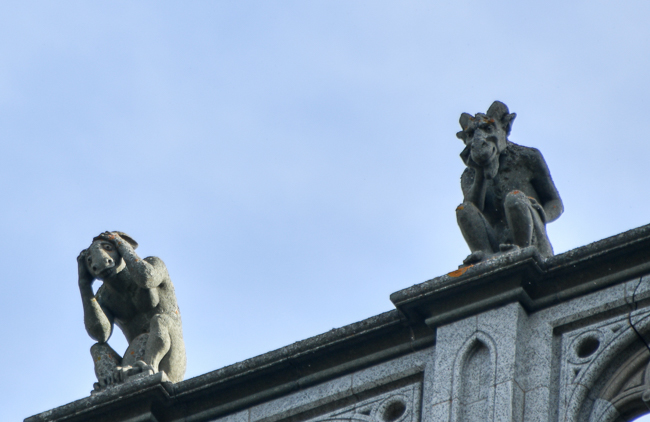
These two sculptures are on the very top of the cathedral. I think the one on the left looks a lot like Dobby from Harry Potter.

Stiftsgården
Stiftsgården is the royal residence in Trondheim. It is one of the largest wooden buildings in Northern Europe, and it has been used by royalty and their guests since 1800.
I am specifically on a boat to see the Northern Lights. However, it limits your time ashore. This was a real drawback in the case of Trondheim, a city well worth spending some quality time in.

Kjeungskjaer Lighthouse

Kjeungskjaer Lighthouse
Leaving Trondheim on the way to Rorvik we passed the Kjeungskjaer Lighthouse. Built in 1880,it sits on a tiny skerry off Ørlandet. The weather in this area is highly unpredictable (it is raining as I write this, after a nice sunny day in Trondheim.) For this reason, the stone-built lighthouse and its cast-iron lantern room were built to withstand all conditions. The original French-built Fresnel lenses that project the light from the lantern are still in operation.
The 66-foot-high structure helps fishermen and sea travelers stay on course as they approach the point where the Trondheimsfjord meets the North Sea nearby.